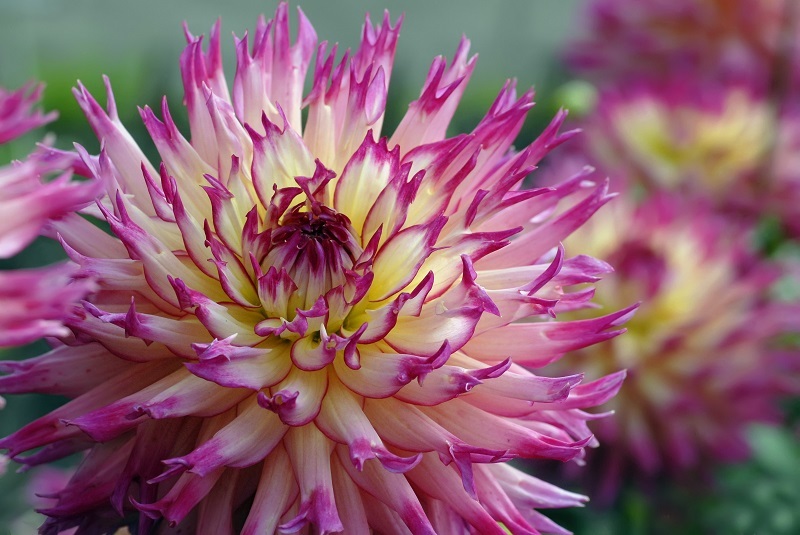Explore In-Depth Techniques to Enliven Hydrangeas
Posted on 18/08/2025
Explore In-Depth Techniques to Enliven Hydrangeas
Hydrangeas captivate gardens with their lush foliage and vividly colored blooms. However, achieving and maintaining stunning hydrangea displays demands more than just basic care. Whether you're a beginner or an experienced gardener, this comprehensive guide uncovers expert approaches and the latest horticultural insights to enliven hydrangeas and keep them flourishing year after year.
Understanding Hydrangea Basics: Foundation for Vibrant Blooms
Before diving into advanced techniques, it's essential to grasp the fundamentals of hydrangea care. These versatile shrubs come in several distinct types, each with unique needs:
- Bigleaf Hydrangeas (Hydrangea macrophylla): Known for their bold, mophead or lacecap flowers. Color responds to soil pH.
- Panicle Hydrangeas (Hydrangea paniculata): Renowned for their cone-shaped blooms, thriving in cooler climates.
- Oakleaf Hydrangeas (Hydrangea quercifolia): Valued for oak-shaped foliage and creamy white blooms.
- Smooth Hydrangeas (Hydrangea arborescens): Adaptable, with globe-shaped flowers, often in white or greenish tints.
Identifying your variety is crucial for implementing tailored strategies that truly revitalize and transform your hydrangeas.

Optimal Planting: Give Your Hydrangeas a Head Start
Location, location, location: Hydrangeas prosper with the right balance of sunlight and shade. Ideally, provide:
- Morning sun with afternoon shade-- particularly vital for macrophylla and quercifolia types.
- Well-drained, nutrient-rich soil to avoid root rot and promote abundant blooms.
Planting tips to enliven your hydrangeas:
- Dig a hole twice as wide as the root ball for optimum root spread.
- Mix compost or aged manure into the backfill to boost soil structure and fertility.
- Water thoroughly after planting, supporting strong establishment.
Mulching Matters
Mulching does more than suppress weeds. A 2-3 inch layer of organic mulch conserves moisture, regulates soil temperature, and gradually improves soil quality, ensuring your hydrangeas are healthy from the ground up.
Mastering Watering Techniques: Striking the Perfect Balance
A common pitfall is either underwatering or overwatering. To revive hydrangeas showing signs of stress (wilting or discolored leaves), adhere to the following strategies:
- Deep watering is critical--ensure water reaches the root zone.
- Water early in the day to reduce evaporation and fungal disease risks.
- Check soil moisture by probing 1-2 inches below the surface before watering again.
- Use drip irrigation or a soaker hose for consistent, slow delivery of water right where it matters.
Pro tip: Hydrangeas react quickly to drought, especially during active growth and bloom. During heat waves, increase watering frequency, but always avoid soggy soil.
Soil Science: Unlock the Secret to Amazing Hydrangea Blooms
The soil's condition directly impacts how vibrant and healthy your hydrangeas are. To restore and enliven your hydrangeas, consider these soil-centric improvements:
Testing and Amending Soil pH
- Bigleaf Hydrangeas: Color changes with pH:
- Blue blooms: Acidic soil (pH 5.2-5.5). Add aluminum sulfate or elemental sulfur for more acidity.
- Pink blooms: Alkaline soil (pH 6.0-6.2). Add garden lime to raise pH.
- General tip: Test your soil every 2-3 years and amend as recommended for your hydrangea type.
Fertilization Techniques: Feed for Flourish
- Apply balanced, slow-release fertilizer in early spring.
- Avoid high-nitrogen fertilizers, which promote foliage at the expense of flowers.
- Compost top-dressing in fall improves soil health for the following season.
Pruning for Peak Performance: Shaping Spectacular Hydrangeas
Correct pruning can invigorate and refresh hydrangeas, encouraging prolific blooms and healthy new growth. Effective techniques vary per hydrangea type:
When and How to Prune
- Bigleaf and Oakleaf Hydrangeas: Prune immediately after flowering (mid to late summer), as they bloom on old wood.
- Panicle and Smooth Hydrangeas: Prune in late winter or early spring, as they bloom on new wood.
Pruning advice to enliven blooms:
- Remove dead or weak stems to channel energy into healthy growth.
- Thin overcrowded branches to improve airflow and reduce disease risk.
- Deadhead faded blossoms to tidy up and promote further blooming in some varieties.
Combatting Common Issues: Prevent & Treat Hydrangea Problems
Hydrangeas may encounter pests, diseases, and nutrient deficiencies that hinder their vitality. Proactive, targeted solutions will restore struggling hydrangeas to full glory:
Frequent Hydrangea Problems
- Leaf Spot, Powdery Mildew: Remove affected leaves, provide ample spacing, and avoid wetting foliage during watering.
- Aphids, Spider Mites: Use insecticidal soap or strong water sprays to dislodge pests.
- Yellow Leaves (Chlorosis): Indicates iron deficiency or alkaline soil--adjust pH and use chelated iron supplements where necessary.
- Droopy Foliage: Results from water stress or transplant shock--ensure deep, regular watering and mulch to stabilize soil moisture.
Natural Remedies & Preventative Measures
- Cultivate companion plants (e.g., marigolds, feverfew) to naturally deter pests.
- Inspect plants frequently for signs of trouble.
- Practice good garden hygiene: clear away fallen leaves and debris to minimize disease risk.
Rejuvenation Techniques for Mature or Neglected Hydrangeas
If your hydrangea shrubs have become woody, sparse, or lackluster, advanced revitalization techniques can bring them back to life:
Hard Pruning for Restoration
- On very old or severely neglected hydrangeas, practice hard pruning in late winter or early spring:
- Cut 1/3 of stems to the base each year for three years--to gradually replace old wood with vigorous new shoots.
- Remove all dead, diseased, or crossing branches for better structure and airflow.
Soil & Nutrient Boost
- Work generous amounts of well-rotted manure or compost into the soil around the base to rapidly improve fertility and drainage.
- Apply a foliar feed during active growth for quick nutrient uptake.
Transplanting & Division
- If a hydrangea has outgrown its spot or struggles due to competition, consider transplanting or dividing in early spring or fall when dormant.
- Water thoroughly and avoid harsh sun for 7-10 days post-move to minimize shock.
Maximizing Blooms: Insider Tricks to Stimulate Abundant Flowering
To guarantee your hydrangeas reach their full potential, try these advanced bloom-stimulating tactics:
- Pinching: For varieties that bloom on new wood, pinch back tips in late spring to encourage bushier plants and more flowers.
- Flower Remobilization: Remove some buds on overcrowded stems, allowing fewer but larger and showier blossoms to develop.
- Foliar feeds with phosphate encourage bud formation during early growth stages.
Professional Technique: Stem Notching
- Make small, shallow cuts below a set of buds in early spring to stimulate dormant buds into active growth, resulting in denser, more flower-laden stems.
Warning: Avoid excessive fertilization or improper pruning, which can set back or eliminate the season's blooms entirely, especially for hydrangeas that flower on old wood.
Seasonal Hydrangea Care Calendar
Year-round attention is the key to thriving hydrangeas. Use this quick seasonal guide for ongoing vitality:
- Spring: Prune as recommended, fertilize, mulch, monitor for pests/diseases, tidy up old growth.
- Summer: Maintain deep watering, deadhead spent flowers (if desired), watch for signs of heat stress.
- Autumn: Add compost or leaf mold, wrap vulnerable varieties in colder zones, reduce watering as plants enter dormancy.
- Winter: Protect young or sensitive plants with burlap covers, clear out debris, plan garden changes for spring.
Enliven Hydrangeas with Creative Display & Companion Planting
Revitalizing hydrangeas isn't just about care--it's also about design. Enhance your garden's visual impact by pairing hydrangeas with complementary species or using containers creatively:
- Companions: Ferns, hostas, astilbes, and Japanese forest grass offer contrasting texture and shared shade preferences.
- Container magic: Hydrangeas thrive in large pots--ensure excellent drainage and regular feeding for best results.
Mixing varieties creates a tapestry of colors and bloom shapes, while selective placement (e.g., along pathways or under trees) lets hydrangeas shine as garden focal points.

Frequently Asked Questions about Hydrangea Vigor
Why hasn't my hydrangea bloomed?
- Possible causes: Incorrect pruning timing, insufficient sunlight, winter bud damage, or nutrient imbalances.
How can I make my hydrangea flowers blue or pink?
- Adjust soil pH: Acidify for blue blooms, alkalinize for pink, only with bigleaf hydrangeas.
What is the best fertilizer for vibrant hydrangeas?
- Use a balanced, slow-release fertilizer or organic compost to avoid over-stimulation of leaves at the expense of blooms.
Conclusion: Breathe New Life into Your Hydrangeas
With a blend of basic care and advanced gardening techniques, you can enliven and revitalize hydrangeas--transforming them into the stars of your landscape year after year. Remember: success is rooted in understanding your specific hydrangea's needs, maintaining healthy soil, perfecting watering, and pruning smartly. Incorporate creative garden design and companion planting for truly showstopping displays.
By following these comprehensive tips, you'll enjoy luxuriant blooms, healthy growth, and the satisfaction of nurturing one of nature's most enchanting shrubs to its fullest glory.
Latest Posts
Explore In-Depth Techniques to Enliven Hydrangeas
Sustain the Charm of Your Poinsettias with Ease
Shedding Light on Birth Month Flower Lore
Curated Birthday Flower Selections
The Deep Meanings Behind Your Birth Flower and What It Says About You





